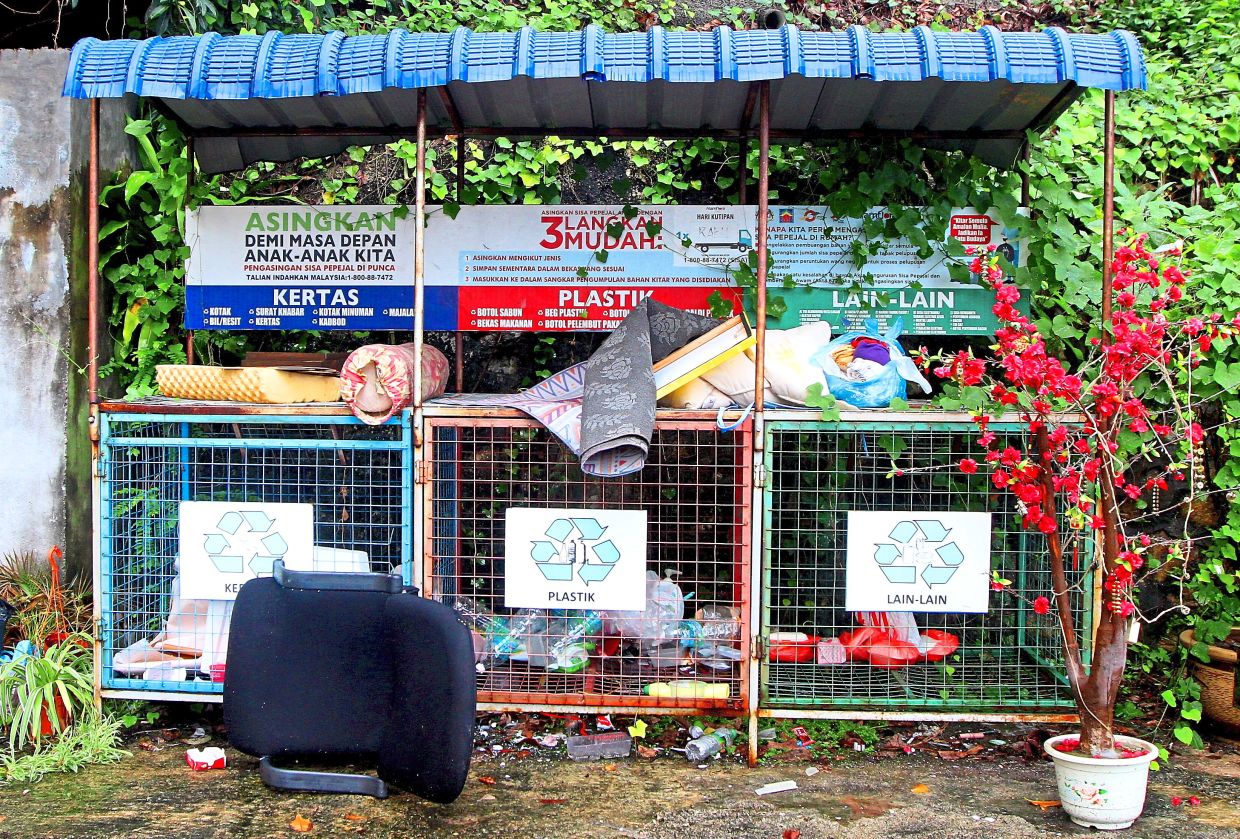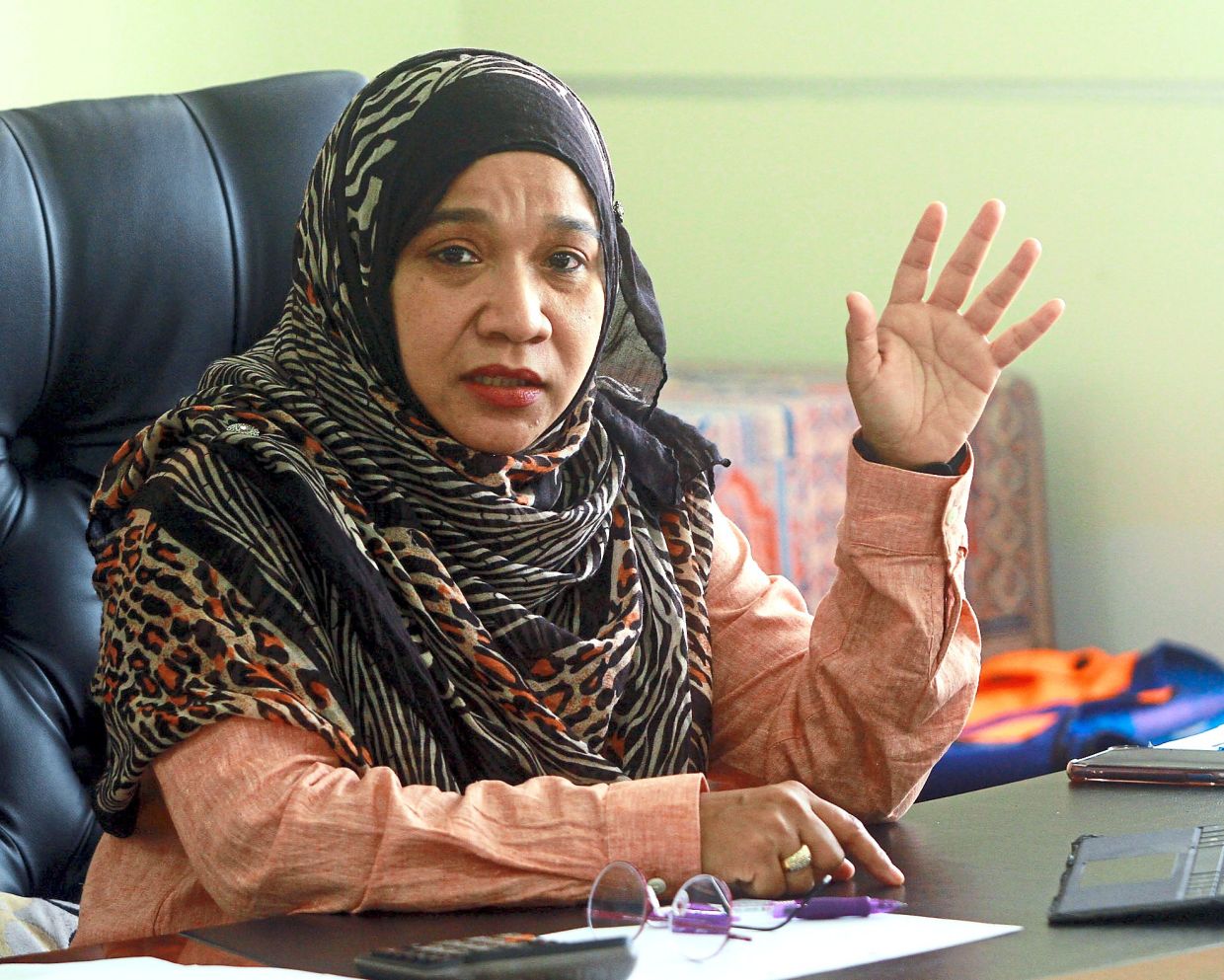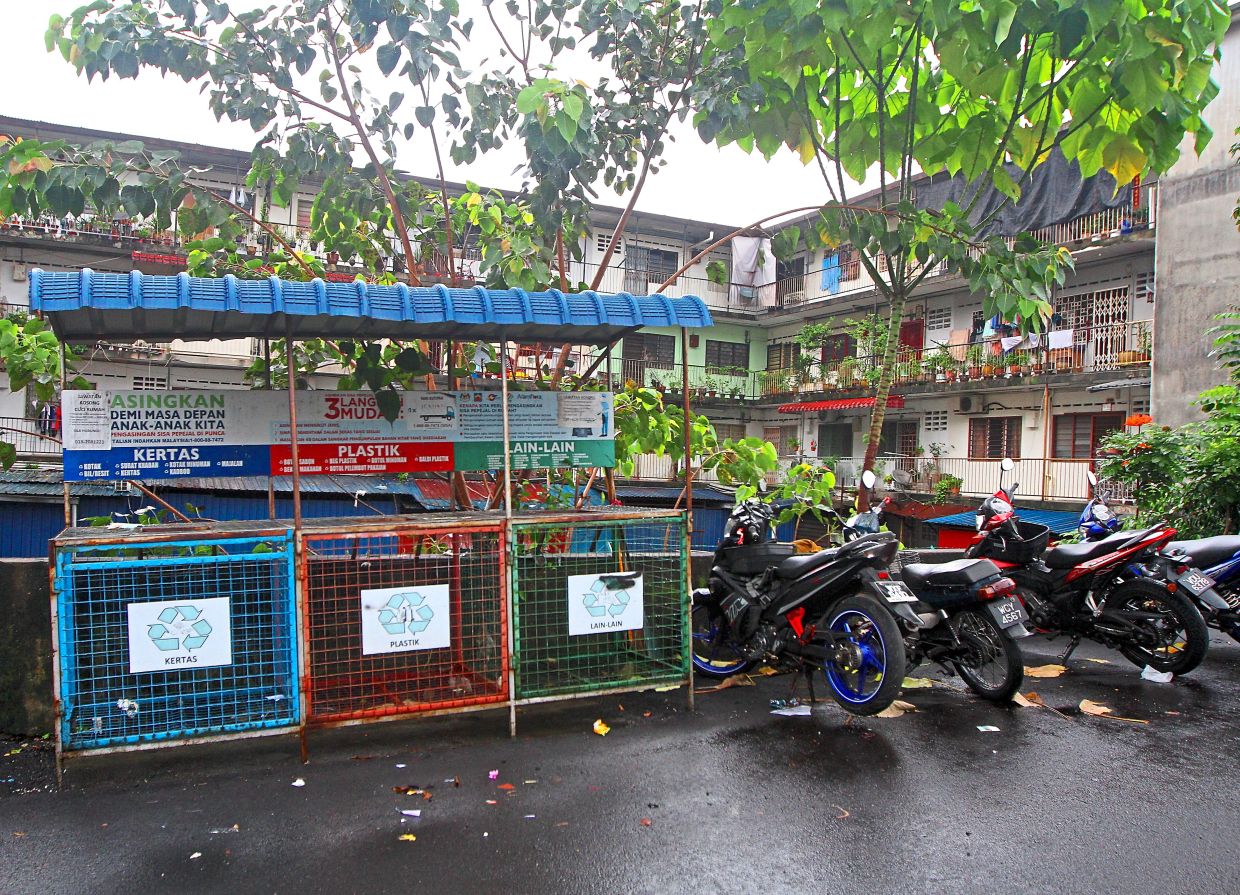Seven years after its introduction, Kuala Lumpur residents are still not keen on using the cages for recycling as seen from here in Jalan Kelang Lama.
SOMEWHERE in the quiet neighbourhood of Happy Garden, near Jalan Kuchai Lama in Kuala Lumpur, lies a rusty recycling cage that has been dumped by the roadside.
The large cage, which measures 2.13m by 3.04m, is a sorry sight, resting upside down and at an angle. It sticks out like a sore thumb in the residential area.
Residents there are fed up with the eyesore and are appealing to the authorities to have it removed.
The rusty cage was obviously transported from somewhere else and dumped here.
And sadly, this is not the only such recycling cage that has met such a sad fate.
Abandoned recycling cages have been sighted in areas such as Brickfields, Kepong and Bandar Tun Razak.
ALSO READ: Residents want redundant, unsightly cages removed
Seven years ago, several hundred such cages were provided by Solid Waste Management and Public Cleansing Corporation (SWCorp) to residents living in high-rises and in some commercial areas in Kuala Lumpur, to help kick-start the waste separation at source drive and to encourage recycling.
But over the years, these cages have “drifted” far from their assigned locations. Some have even ended up in monsoon drains.
“It’s time that the authorities accept the reality that Malaysians are not matured enough to use recycling cages,” griped M. Viknendran, 53.
“The ones who actually put in effort are too small a group, and they are getting fed up with having to clean up after the majority,” said the Bangsar resident.
Taman United resident Sean Oon said the recycling cages were not helpful and should be removed.
He suggested that authorities emulate effective methods like that of Tzu Chi Foundation’s community recycling centres and collection points instead.
“I recently read Local Government Development Minister Nga Kor Ming’s Facebook post, saying that RM100mil will be allocated for 260 beautification and urban greening projects in KL,” said resident C.S. Tan from Taman Bukit Indah.
“I suggest that he gets the authorities responsible to remove the cages permanently. If they can’t get it right after seven years, they should just remove them all.”
ALSO READ: SWCorp: Recycling cages to remain despite low usage
Community activist Yee Poh Ping also shared his dissatisfaction over the underutilised cages, saying that they were not only marring the city’s image, but also harming the environment as well.
“Those who are well-versed with recycling practices and advocate sustainable living, will bring their recyclables to sell at recycling centres.
“Others who just dump everything into the cages, including organic waste, create a huge problem for the waste collectors who are forced to spend even more time sorting out the recyclables from the rubbish.
“Unfortunately, there are far more irresponsible residents,” Yee said. Mandatory waste segregationUnder the Solid Waste Management and Public Cleansing Act 2007 (Act 672), it is mandatory for households to separate solid waste at source.
However, in was only in early 2016 that more than 1,153 recycling cages were provided for high-rise and some commercial area residents to separate their recyclables.
This provision was made by the then Housing and Local Government Ministry (now known as the Local Government Development Ministry).
Waste company Alam Flora was tasked with distributing the cages, which was to encourage residents to start practising waste segregation before the mandatory waste SAS (separation at source) programme was implemented on June 1 that same year.
These cages have three sections, for paper, plastic and other recyclables.
Each cage has easy-to-follow instructions provided with infographics educating residents on how to separate their recyclables.
The cages, which cost about RM1,300 each, were placed in high-rises in all 11 parliamentary constituencies in Kuala Lumpur.
StarMetro had in 2016 reported that the cages were underutilised.
In less than six months, more than half of the cages had been destroyed, vandalised or left to decay. In some areas, the cages were even burnt.
In government housing schemes like the People’s Housing Projects (PPRs), even organic waste was dumped into the cages.
Stepping up enforcement
SWCorp Federal Territories director Ummi Kalthum Shuib conceded that the cages were underused.
“We have requested for many of the cages to be pulled out and repaired,” she said when contacted.
Previously, SWCorp was reluctant to compound residents as it wanted to continue encouraging the public to practise separation at source.
“Even the separation at source at high-rises was not being implemented by the buildings’ JMBs (Joint Management Bodies).
“I started checking on all the JMBs since June last year to make sure they adhere to the Act,” she said.
Ummi Kalthum said this year, the agency would be working to increase awareness of the SAS programme, adding that a team was set up last year to educate JMBs and management committees (MCs).
“There will be a series of talks with residents and my team will be going to at least nine condos, apartments, flats and PPRs every day to evaluate the JMBs’ level of knowledge and preparedness on separation at source.
“JMBs still not following the standard operating procedures will receive a warning letter. We will issue a letter after every visit and indicate areas of non-compliance,” she said, declaring that 2023 would be the year of enforcement.
The SAS programme came into force in September 2015.
Offenders of both landed and non-landed properties will be compounded between RM50 and RM500 for failing to separate their waste.
For landed premises, offenders will be fined RM50 for the first offence, RM100 for the second offence and RM500 for the third offence.
For non-landed properties, the JMB/MC can be fined RM100, RM200 and RM500, respectively. After the third offence, legal action will be initiated.







